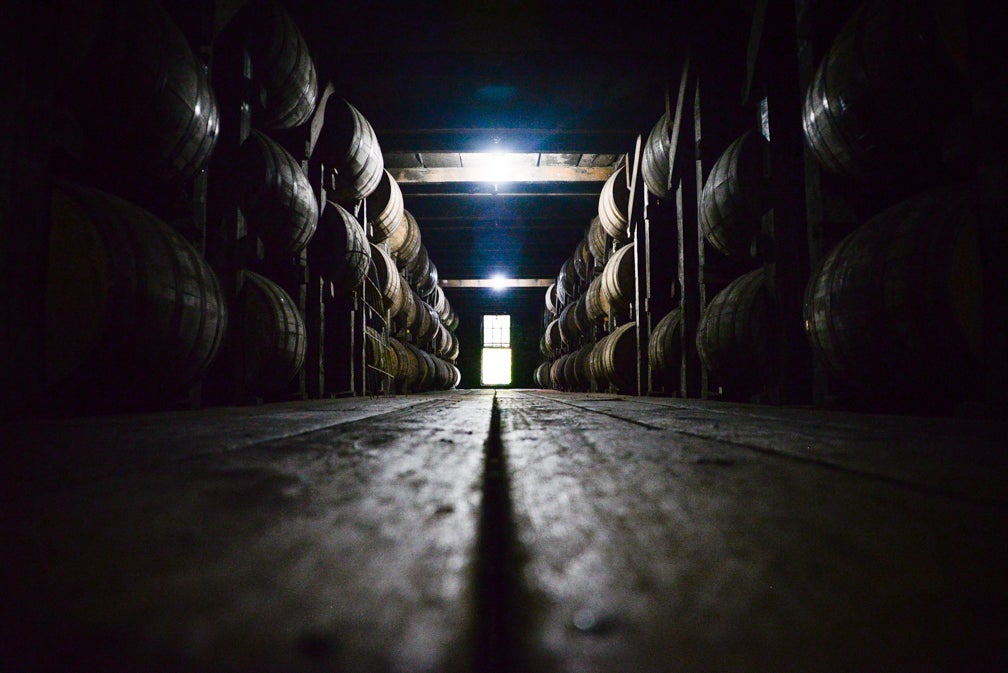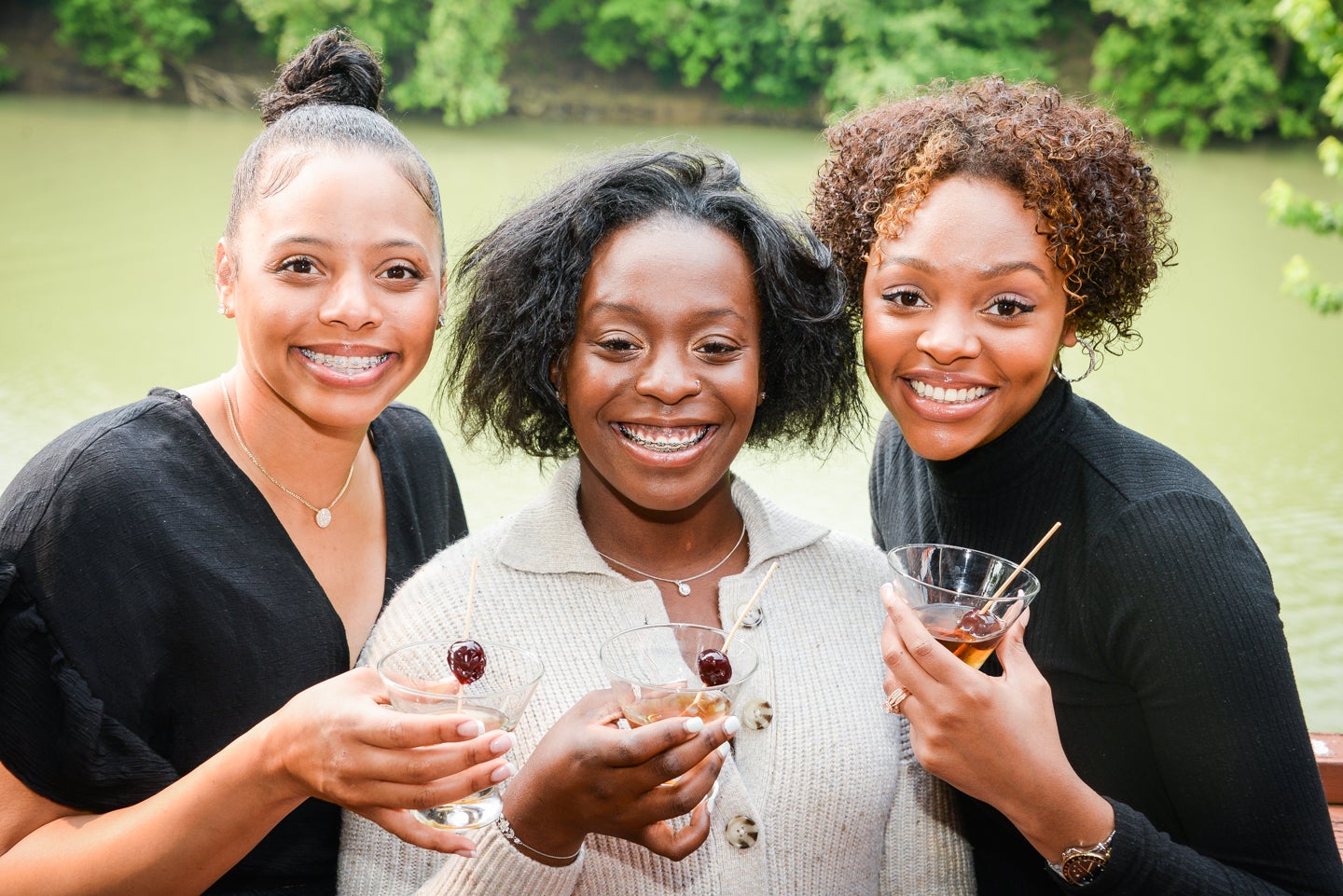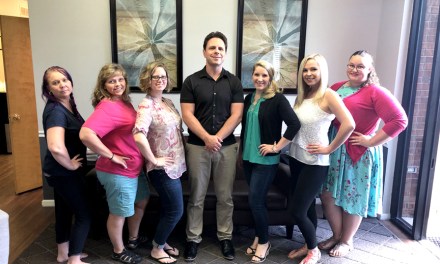By Charles Pearl
Listening to Connie May talk about the young Fantasy Forest in South Frankfort sounds like a teaching by Thich Nhat Hanh, one of the world’s best-known Zen masters.
Nhat Hanh has said if you’re a poet, you will see clearly a cloud floating in this sheet of (magazine) paper. “Without a cloud, there will be no rain; without rain, the trees cannot grow; and without trees we cannot make paper.”
The neighborhood “micro-forest,” at Second and Logan streets in Dolly Graham Park, is an outdoor educational classroom that quietly teaches the vital and mystical interconnections of everything.
The forest is home to more than 150 species of Kentucky native trees, shrubs and wildflowers, including endangered species and many butterfly nectar and host plants.
Some of the older trees on the site, such as sycamores and bald cypress, were planted by Frankfort Tree Board members 10 to 12 years ago.
May has always loved the outdoors, so her job as a natural landscape designer is more fun than work.
She came up with the Fantasy Forest concept but is quick to say it took many people to make it happen.
May met with Parks and Recreation directors and “was thrilled to find they were enthusiastic about the idea. They saw the forest as a place to educate children about nature and agreed to provide matching funds if we got a grant.”
CommonWealth Gardens, the nonprofit group overseeing the organic gardens growing on part of the block, agreed to sponsor the grant.
After receiving a $5,000 People’s Garden grant from the Alliance for Community Trees and the matching grant from Frankfort Parks and Recreation, Fantasy Forest became a reality five years ago.
The chosen site near the Kentucky River was on a mostly vacant city block that had several houses demolished because of flooding problems.
To get the project underway, 60 people donated a total of 400 hours of work — planting native trees, shrubs and wildflowers purchased from local nurseries. Most of the plants were in one- to three-gallon pots and less than 5 feet tall.
After the trees were planted, volunteers covered four 3,000-square-foot beds with cardboard and wood chips donated by Woodland Tree Care.
A giving community
Groups that have done volunteer work include South Frankfort Neighborhood Association, Woods and Waters Land Trust, Capital Area Master Gardeners, Franklin County Tree Coalition, Frankfort High School Earth Club, Go Frankfort and various garden clubs.
“Several individuals who saw flyers posted in the neighborhood showed up and worked hard,” May said. “Neighbors offered to let volunteers use their bathrooms anytime.
“During one of the work days a man from the neighborhood showed up with gallons of ice cream and cones for all the workers. The community spirit was especially strong that day. Two men from the community garden brought watermelons to share with us. During a work party last summer, a neighbor brought all of us delicious homemade trifles.”
The micro-forest’s four sections are called Jungle Island, Disappearing Island, Pollinator Paradise Island and Giant Island.
The mowed path — well-maintained by park employees between the four islands — has created an inviting space for neighborhood residents to walk, relax and birdwatch.
Soon after the forest was planted, volunteers started a Nature Club with children from the nearby Kings Center.
“We dug in the dirt, collected insects from under the mulch, chased squirrels, planted seeds we collected from the forest and had a great time playing in nature,” May said.
The first summer was “very hot and dry, and diligent watering by park employees kept the plants alive,” May said.
Members of the Capital Area Master Gardeners donated a caterpillar castle to raise caterpillars to butterflies, “which has been very popular with kids,” May said.
Volunteers have donated bird houses, a bat house, picnic tables, a kiosk and wildflowers. The city provides bird feeders and seed. Volunteers also have repaired bird feeders and kept them filled, weeded, mulched, pruned, held planting parties for Kings Center kids, donated and installed mason bee boxes and led tours.
May, Debra Parrish and Melissa Calhoun gathered at the forest on a recent Sunday afternoon to weed and remove invasive species.
Dan Green, a retired Kentucky State University sociology professor and South Frankfort resident, took a break from his walk to talk to them. The forest “is a nice addition to South Frankfort,” Green said. “I enjoy walking by it, and I try to help keep it clean.
“It’s amazing what it has turned into. I see it every day and I can’t believe how fast it has grown.”
May says she’s been planting trees, shrubs and wildflowers for 35 years and it still fascinates her.
Beautiful butterflies and birds
The plantings have brought in birds and butterflies, Parrish said.
“Our first year here, we found a less common butterfly, the giant swallowtail, the biggest in Kentucky and the eastern U.S.,” May said.
The body and wings are dark brown to black with yellow bands and a yellow eyespot in each wing’s tail.
“It has a 4½- to 5-inch wingspan,” Parrish said. “It’s amazing when you see it floating through your gardens.”
May said, “The first year we planted we had eggs from the giants, and caterpillars, and raised them in our caterpillar castle.
“Initially we planted trees and shrubs that could grow in the sun. As we got more shade, we added understory plants that grow in shade like ferns, harbingers of spring, jack-in-the-pulpit, goldenseal and spicebush.”
Calhoun, an herbalist, with naturalist Hannah Helm, led members of the Kentucky Herbal Alliance on a tour of Fantasy Forest in September.
“We’re interested in supporting the forest and bringing more attention to it,” Calhoun said. “We were excited to have a plant walk here. It’s such a convenient, central place for people coming from different parts of the state.
“Herbalism is something people feel shy about sometimes. Not everybody understands there are things in our back yards that can help us. People have had a relationship with plants forever.”
The herbal alliance program was titled “Wild Medicine, Wild Food.” The flyer said, “Medicine and food for people and animals grow all around us. Come visit some of them at Fantasy Forest.”
Besides touring the forest and having lunch there, alliance members helped weed, divide and replant native perennials.
At Sunday’s work party in October, May, leading a tour, stopped at a pawpaw tree. She touched a long green leaf and said, “This one is a tropical plant and really distinctive. I hope next year when they get a little bigger they’ll start having fruit. One part of the grant was planting edible plants such as pawpaw, hazelnut and persimmon.”
Parrish and May talked about the pawpaw tree being a host plant for the black-and-white-striped zebra butterfly and the tulip poplar being a host plant for the tiger swallowtail butterfly.
Then May gave a teaching on host plants.
Butterflies and moths, along with most native insects, are host specific; in their larval form they can only eat leaves from native plants.
“Monarch butterflies depend on milkweed, a native wildflower, for survival,” May said. “Monarchs are popular and they’re in severe decline. Monarchs don’t reproduce in Mexico. They go to Mexico to hibernate. They reproduce in our back yards, in fields and forests in Kentucky. The monarchs can only lay their eggs on milkweed.”
There’s a monarch waystation on Disappearing Island that provides milkweeds, nectar sources and shelter needed to sustain monarch butterflies as they migrate through North America.
“Most butterflies will eat only one or two or three species of plants,” May said. “If those native host plants aren’t available, they simply won’t reproduce. They won’t lay their eggs on something else. The host plants for most of our beautiful butterflies and moths are primarily trees and shrubs … and a butterfly garden that includes trees and shrubs is also an oasis for birds.”
May walked by a native deciduous holly bush with numerous red berries. “These won’t ripen until late winter or early spring,” she said. “That way when robins come through and they’re hungry, there will be something for them to eat in February. Besides being native and providing food for birds and nectar for pollinators and butterflies, it’s gorgeous in the landscape.”
Several days later, a man in his late 60s took a break from his afternoon walk and sat at a picnic table in Fantasy Forest. Soon a cardinal began singing in an arrowwood viburnum shrub. Nearby a chattering squirrel dangled on a tree limb.
The man thought of the voice Kevin Costner heard in the Field of Dreams movie: “Build it and they will come.”
A poet can look at a milkweed plant and see a monarch butterfly and a little forest. Connie May is a poet. She’s seen numerous poets and miracles in Fantasy Forest the last five years. The children poets are the ones that bring joyful tears to her eyes.

















